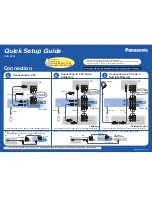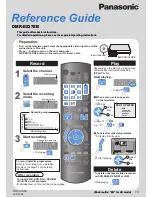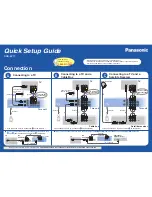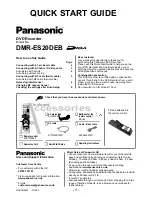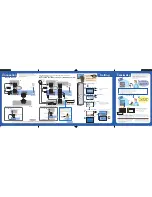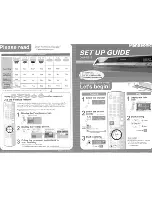
10
11
Setups of musical
instrumen
ts
Tips for recording individual musical instruments or musical performances
Place the LS-10 some distance in front of the singer(s). If breath
noise is noticeable, set the LOW CUT switch to ON or attach the
provided windscreen to the LS-10. Adjust the angle of the unit
with care as the lowest and highest frequencies may be lost at
certain angles.
Point the LS-10 at a point just slightly off the guitar's sound hole.
Pointing the unit more toward the saddle will make the sound
softer and more reverberant, while pointing it more in the
direction of the neck will make the sound sharper and crispier. In
general, it is better to put the microphones closer to the guitar
when recording the rhythm guitar, and further away when
recording the lead guitar playing the main melody.
Place the LS-10 directly in front of the guitar's sound hole, but
point the microphones towards the singer's mouth. This will
record the vocal and guitar accompaniment with the optimum
balance. If the LS-10 is positioned with one side facing down, the
vocal and guitar accompaniment can be distributed to the left
and right channels and the balance can be adjusted later.
Point the LS-10 to the center of the bell. If breath noise is
noticeable, point the unit slightly away from the center of the
bell. When the recorder's position is off-center line, high
frequencies will be more noticeable in the recorded sound.
When the recorder is moved closer to the instrument, the
recorded sound will have a crisper tone.
When recording a string musical instrument such as a violin,
place the LS-10 above the instrument by pointing it at the f-hole
on the body. With a string instrument, decreasing the distance of
the LS-10 from the instrument results in a clearer, more contoured
sound, while increasing the distance results in a softer sound.
With a grand piano, point the LS-10 towards the center of the
soundboard located inside the opening of the piano. To
include the sounds in the environment where the piano is
located, place the microphones further away from the piano
so that they can capture the overall sound. As with other
instruments, the closer the microphones are to the piano, the
clearer the recorded sound, while the further away they are,
the softer the sound.
An electronic musical instrument such as a keyboard does not
itself emanate sound so its music signal should be input directly
from the LINE OUT jack. An electronic instrument usually uses
two 6.3 mm (1/4") dia. standard (phone) plugs for the output, so
an adapter cable (commercially available) that can convert the L
and R phone plugs into a 3.5 mm (1/8") dia. stereo mini-plug
should be used. When the electronic keyboard uses a monaural
output or when recording the monaural output of a guitar
amplifier, purchase an adapter cable (commercially available)
that can convert the 6.3 mm (1/4") dia. monaural phone plug
into a 3.5 mm (1/8") dia. stereo mini-plug. It is recommended to
use a non-resistance type cable.
To record the sound output from the speaker of a guitar
amplifier, place the LS-10 at a distance from the amplifier and
point it at the center of the speaker cone. If the guitar
amplifier has two speakers, aim the recorder at a central point
between the two speakers if you want to record in stereo, or
point it at a position slightly away from the center. It is
recommended to set the MIC SENSE switch to LOW when
recording the sound output from a guitar amplifier. If you
want to record the signal output from the LINE OUT directly,
connect it in the same way as an electronic keyboard.
When recording the performance of an orchestra, big band or
choir in a concert hall, mount the LS-10 on a stand and place
it on the extension of the stage center line, so that all of the
performers are included in the microphone directivity
coverage.
|
Vocals
|
Acoustic guitar
|
Sing-along with guitar
|
Wind instrument
|
String instrument
|
Piano
|
Electronic keyboard
|
Electric guitar
|
Recording in a concert hall, etc.
Positioning if breath noise is
noticeable
Deviate slightly
from the sound hole.
At a certain
distance in front
of the sound hole.
The balance can
be adjusted later.
The tone of the recorded
sound varies depending
on the positioning of the
recorder.
When breath noise is
noticeable
Twin phone plugs - 3.5 mm dia. stereo mini-plug
converter cable
LINE IN
Guitar amp
Guitar amp
Orchestra, big band, choir, etc.
Sharp, crispy sound
Soft, reverberant sound
Point at the f-hole.
Point at the soundboard.
Keyboard
LINE OUT
Speaker
Speakers










